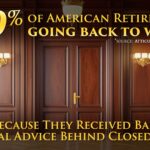Today President Donald Trump followed through on another one of his campaign promises by signing an Executive Order designed to reduce the number government regulations and help American businesses. By signing the order Trump commands all federal agencies (starting in 2018) to create “regulatory reform” task forces which will evaluate federal rules, and recommend whether to keep, repeal or change them. The President said that he will slash 75% of existing government regulations including paving the way for the Keystone XL Pipeline and the Dakota Access Pipeline, and reversing Pres. Obama’s “Stream Protection Rule” which was designed to stop coal companies from putting coal-waste near natural waterways.
Trump says the current regulatory system is “a tremendous burden on American business and he that cutting regulations will create jobs and more economic opportunities in the U.S.” He wants to stop companies from being punished for doing business in the U.S. and adds that “if regulations do not make life better and safer for American workers, then those regulations will be eliminated.”
A recent survey on small business regulations from the National Small Business Association found that small business owners reported spending an average of $12,000 a year on regulations and 58% of owners said federal regulations where the most difficult source. The IRS, EPA, and Labor Department were cited as the federal agencies with the most troublesome regulations in the survey, with the IRS dominating the vote. For many small business owners, $12,000 a year is the difference between profit and loss, especially if you’re in your first few years of business. When margins are tight, taking out business loans to finance a new hire to help you become compliant or to pay for legal expertise to help you navigate the regulations can get expensive fast, especially if your business credit isn’t great.
See more from Pres. Trump’s press conference today, below.
By the way,the U.S. isn’t the first country to try and reduce the number of its federal regulations. Canada, Australia and the United Kingdom have already slashed regulations. For example: for every rule issued in the U.K., three existing rules must be eliminated. According to a U.K. government report, that requirement saved businesses over $1 billion dollars from May 5, 2015 to May 26, 2016.













